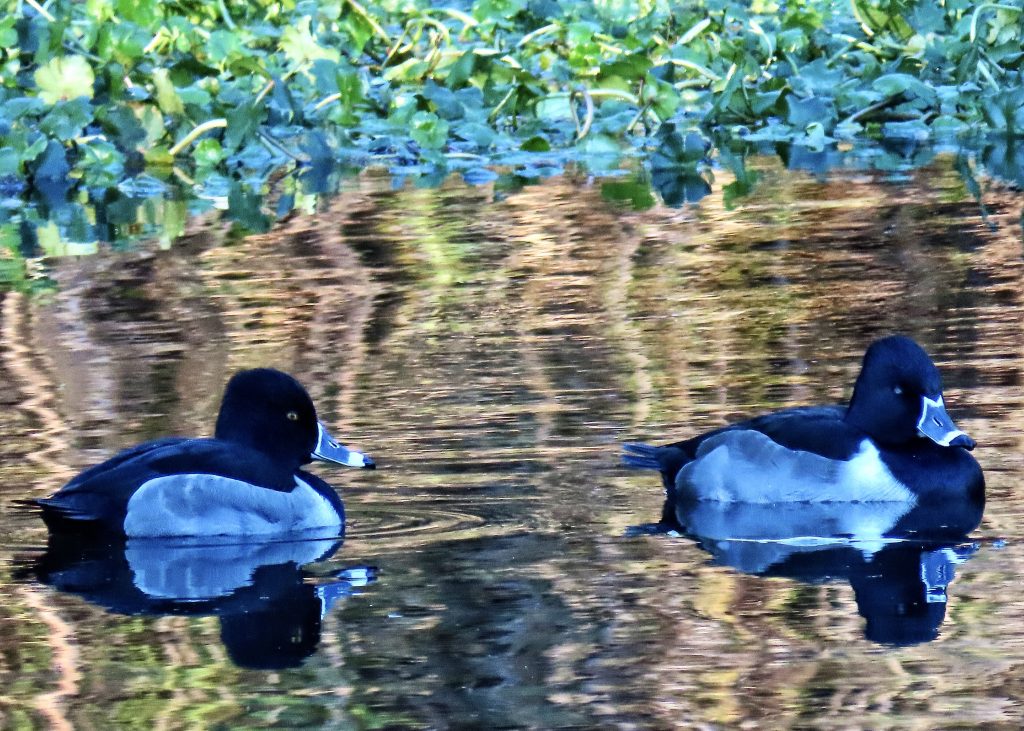
Have you ever seen the ring on the neck of a Ring-necked Duck? I don’t recall ever seeing it, but the books say it is cinnamon or brown, and circles the base of the neck. But many times I have seen the pair of white rings on the bill, at the base and just behind the nail, separated by a dark bluegrey expanse.
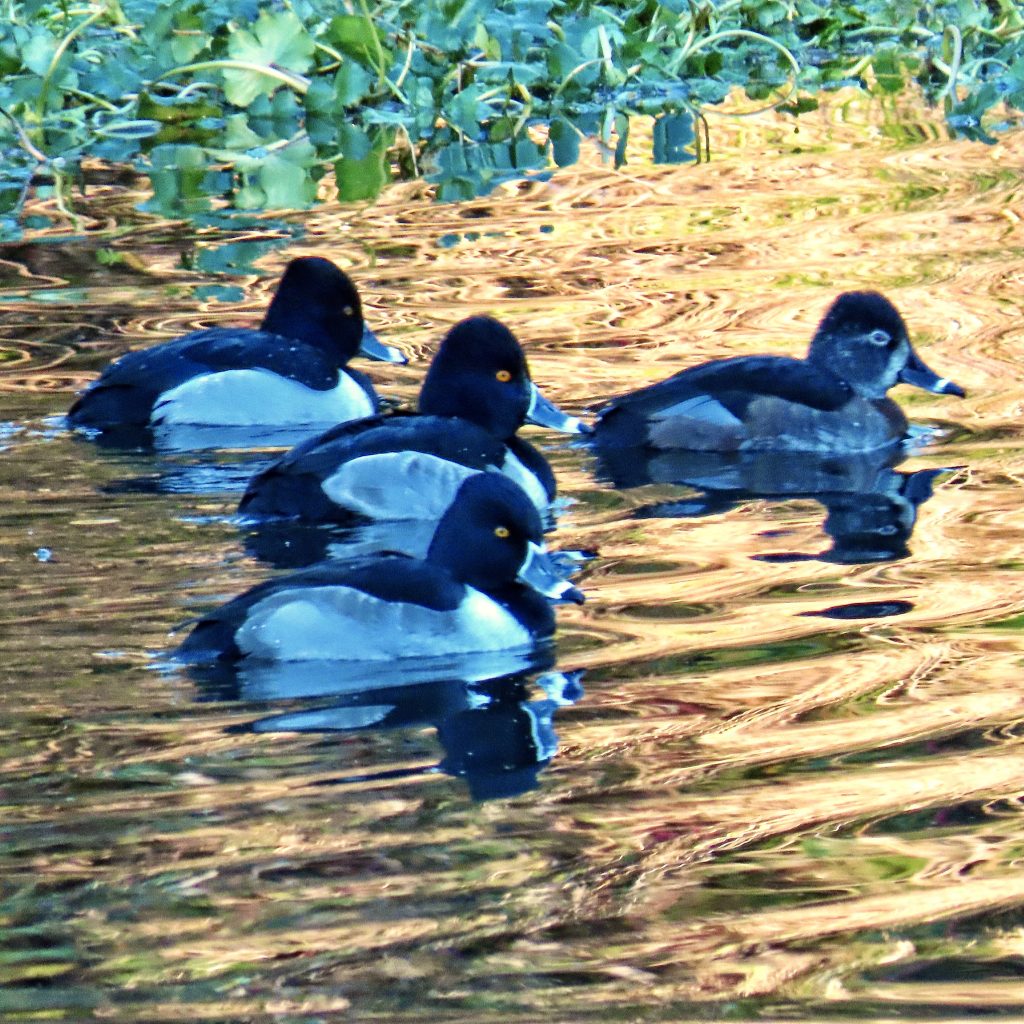
As a beginning birder 10 years ago I was so grateful for such a definitive identification trait (and on the females also, a gender of waterfowl that I still struggle with) that Ring-necked Ducks quickly became one of my favorite ducks. It helped that they were less common than many other species, so seeing (and identifying!) one was always a treat. It also was endearing to me that they would be found in places without a lot of other waterfowl, especially small, isolated woodland wetlands, places where I would be looking for songbirds and woodpeckers rather than ducks.
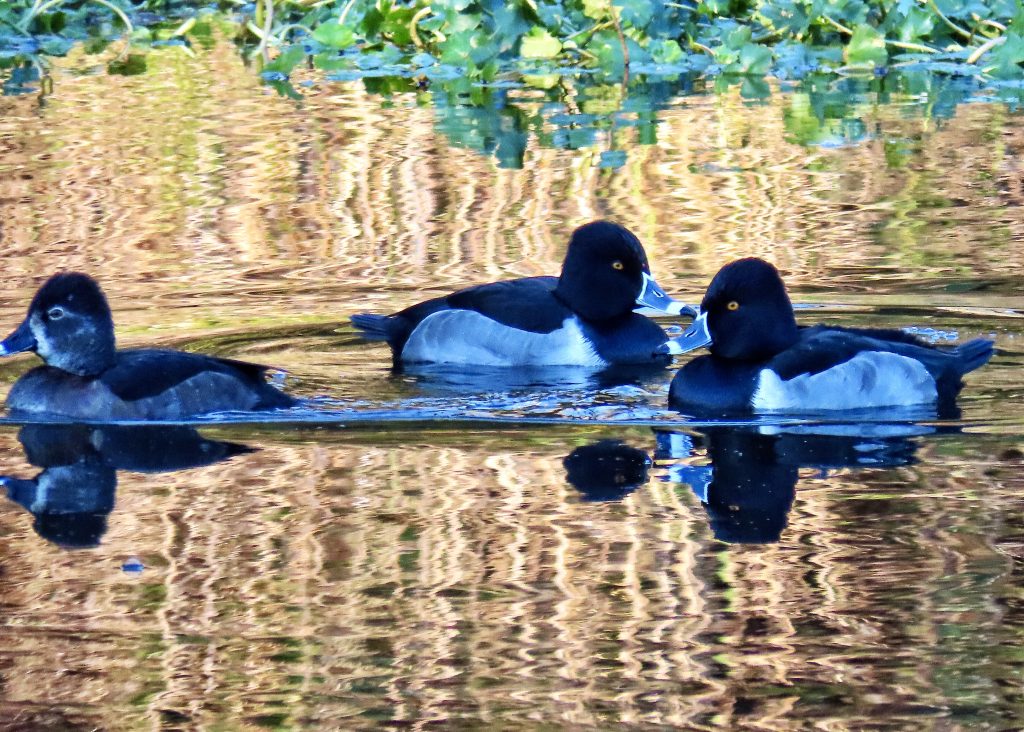
Even now, a decade and hundreds of Ring-necks later, most of them associated with large bodies of water and large groups of ducks, I still get a charge from seeing them. This group, on a small pond alongside the Old Evergreen Highway between Vancouver and Camas, caused me to search directedly for a pullout, and hike back a few hundred yards, just to watch them for awhile, and snap a few photos in the fading light of a glorious late fall day.
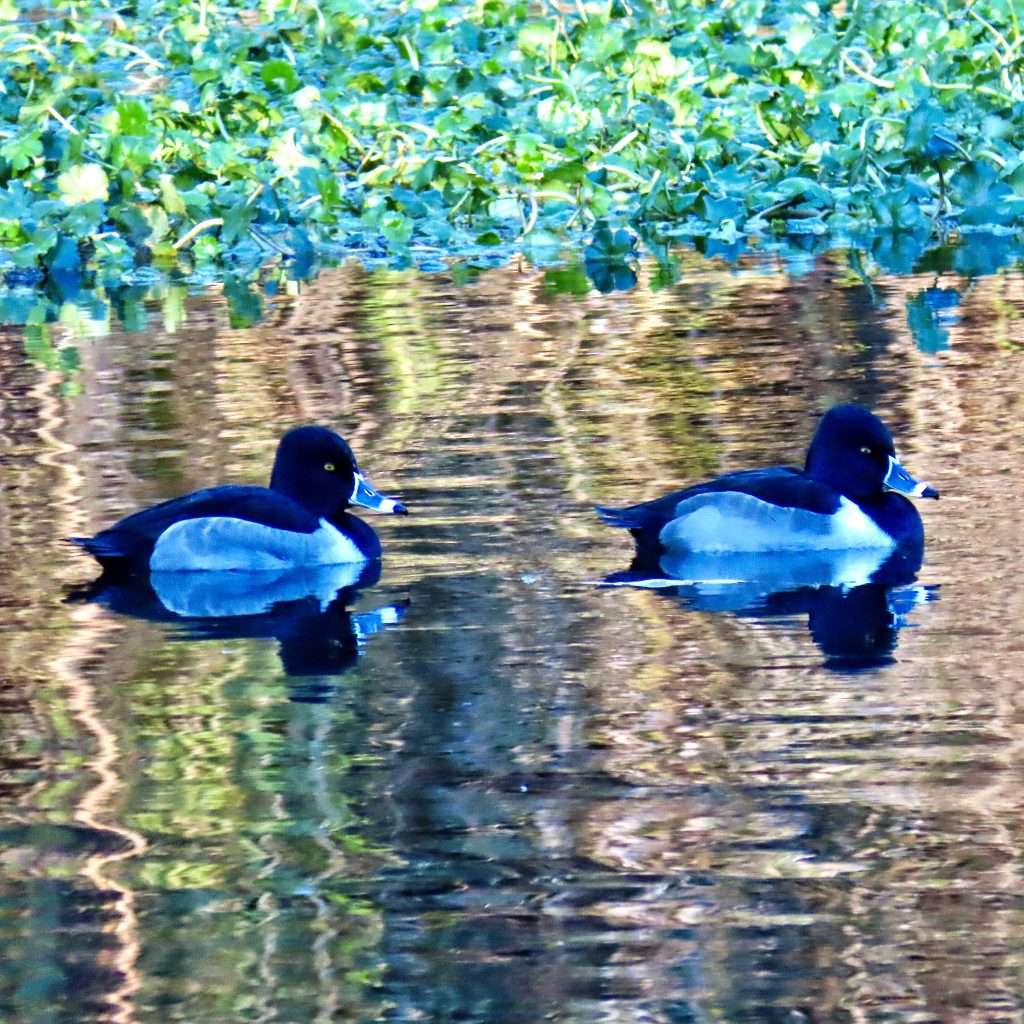
Description-Medium sized duck; males have a black breast, head, and back; finely barred gray sides with white up front that extends a narrow triangle into the black back; an alleged brownish collar on the neck, and verifiably with white rings at the base and near the end of the bill, with gray between them and a black nail at the bill tip. Females have a white eyering, a grayish face, are more grayish brown on the sides, with a broader white mark in the feathers near the base of the bill, and a white ring behind the nail of the bill.
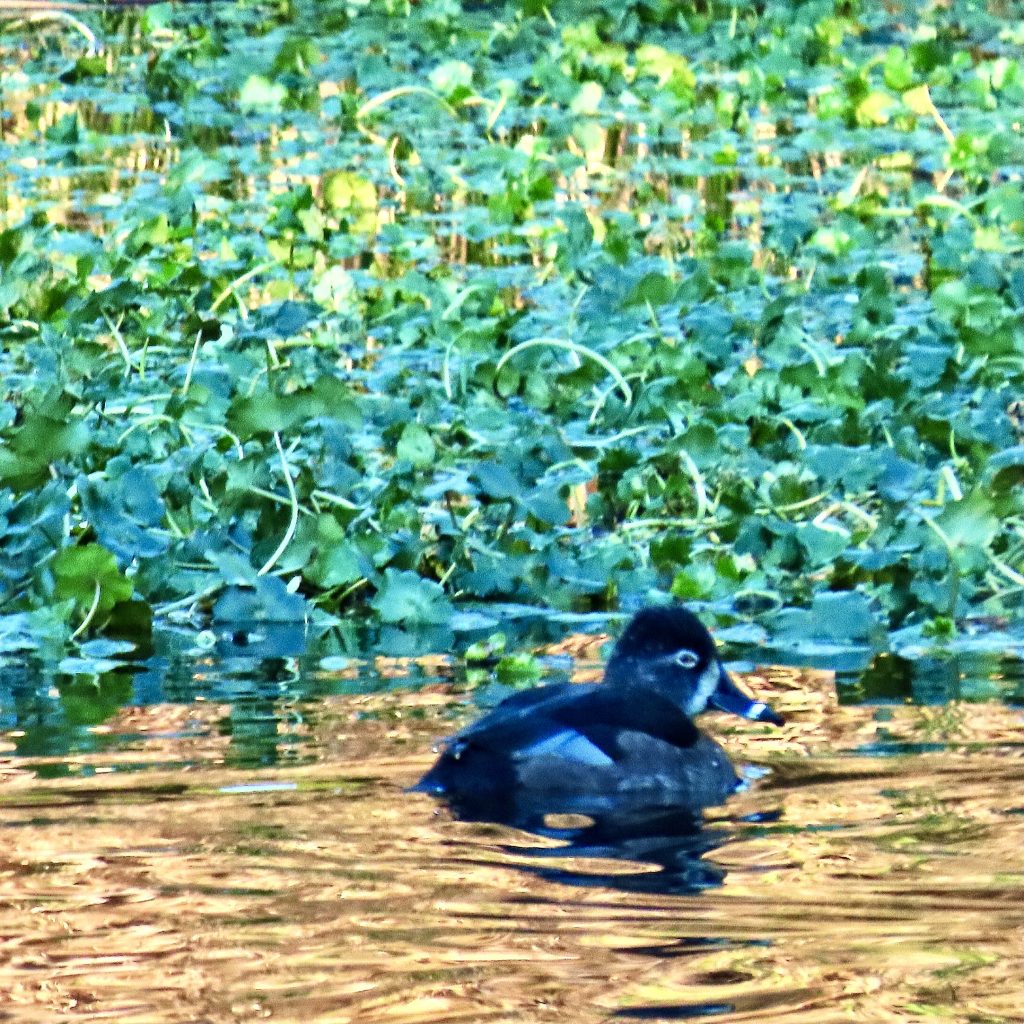
Similar species-Nothing else has that distinctive bill. Male Greater and Lesser Scaup have gray backs and also do not have the white spur extending into the black, and female Scaup have an even broader band of white behind the bill, and lack the white eyering. The occasional vagrant Tufted Duck males have white sides, lack white rings on the bill, and have a long plume of feathers extending from the back of their head, although in my experience that is not always visible, while the females lack the white eyering, and have little or no white behind the bill.
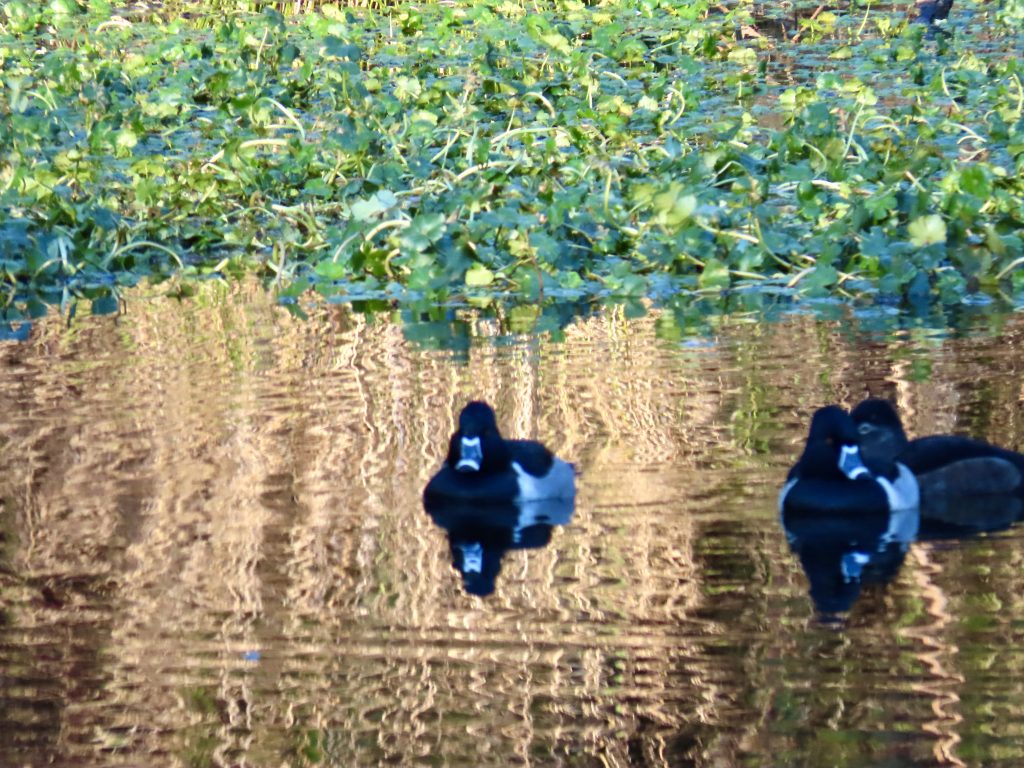
Habitat-Breeds on wooded ponds and sloughs; can be found on almost any body of water during migration; common along the Columbia River in winter.
Range-Region wide during migration; year around resident in the Columbia Basin east of the Cascades, and in the lowlands between the Cascades and Coast Range on the westside; migrant breeders found in ne Oregon, Idaho, and se BC.
Eats-Dives for seeds, leaves, and tubers of aquatic vegetation; opportunistically feeds on invertebrates.
Eaten by– Ducklings are preyed upon by mink, large fish, raptors, and anything else that can catch one. Bald Eagles, foxes, and coyotes target the adults.
Adults active– Year around. Most common in winter in our region, but some do breed here.
Etymology of names–Aythya is from the Greek for ‘a diving bird’, although some etymologists think that the diving bird in question was probably a seabird like a petrel or shearwater, so the reference may completely miss the mark. And the species epithet collaris is from the Latin for ‘a chain for the neck’, no doubt referencing that cryptic and eponymous neck ring.
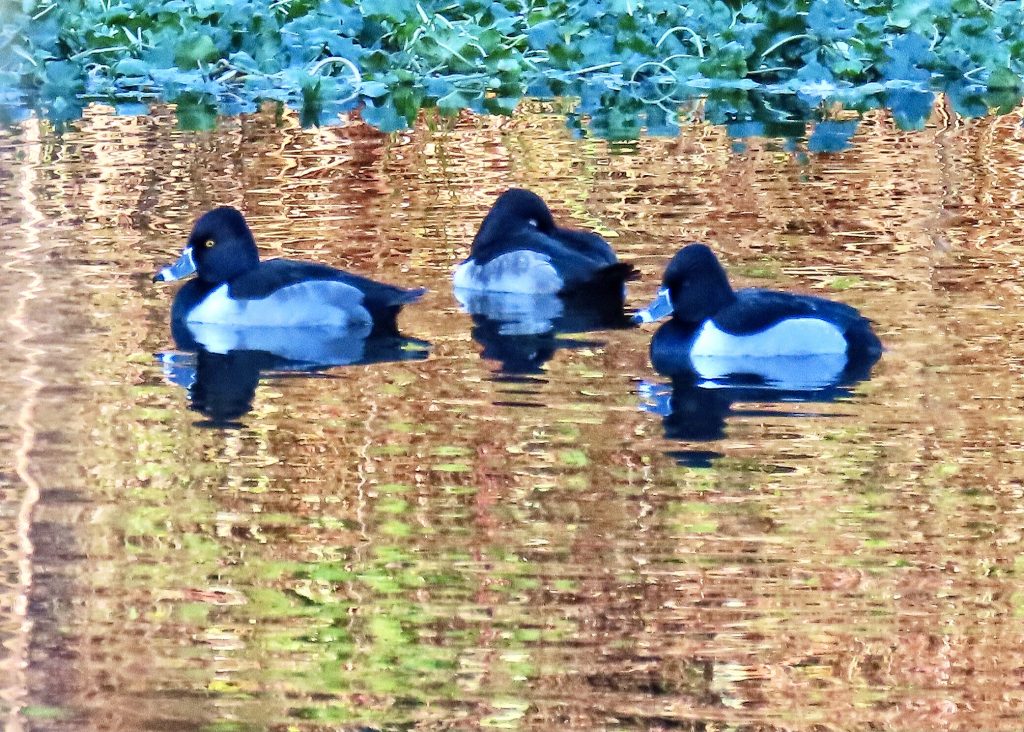
https://www.audubon.org/field-guide/bird/ring-necked-duck
https://animaldiversity.org/accounts/Aythya_collaris/
https://www.borealbirds.org/bird/ring-necked-duck
https://www.allaboutbirds.org/guide/Ring-necked_Duck/overview
https://en.m.wikipedia.org/wiki/Ring-necked_duck
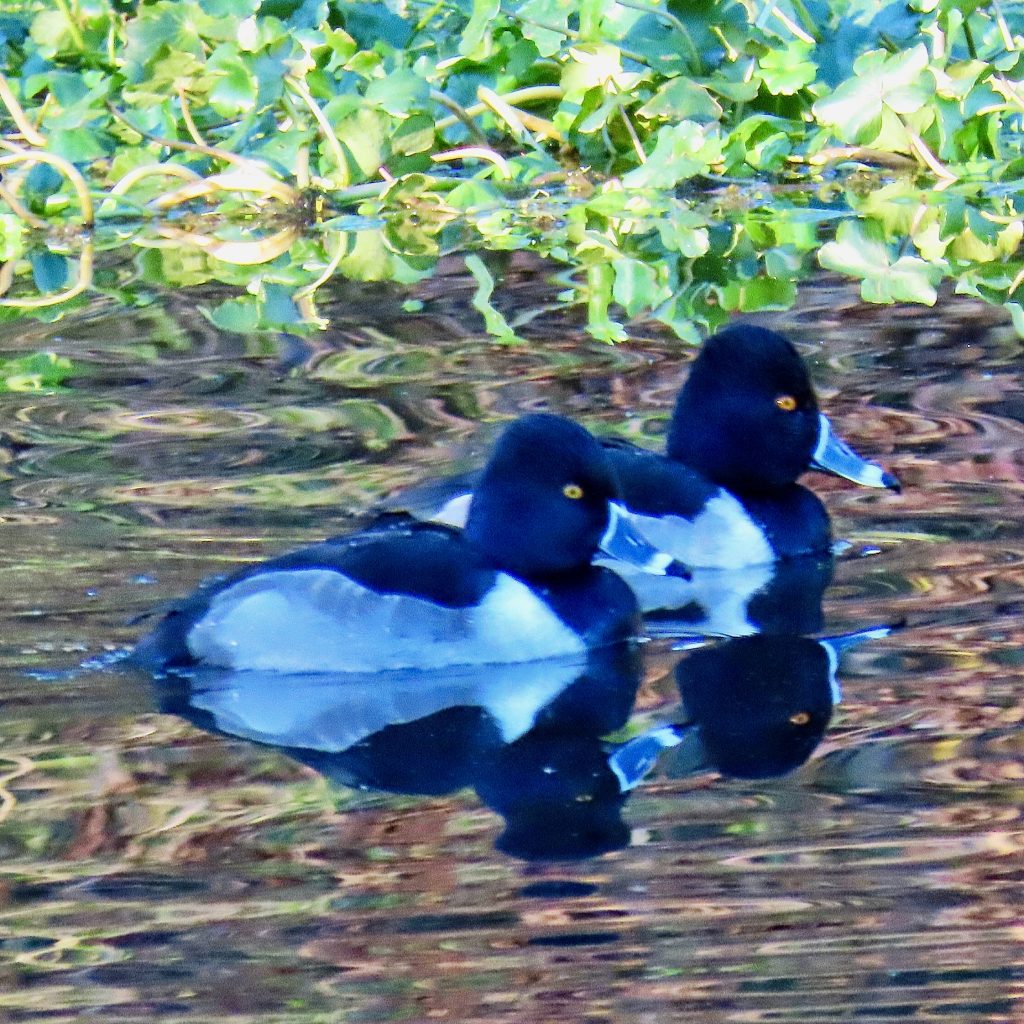
You are right – almost impossible to see the neck ring. They actually have fairly long necks, but usually their head is hunched down onto the shoulders. I have only seen it once when one cooperated by extending his neck up to its full length, and the sun was hitting it just right. No time for a photo, of course! But they are lovely, even without a neck ring in evidence.